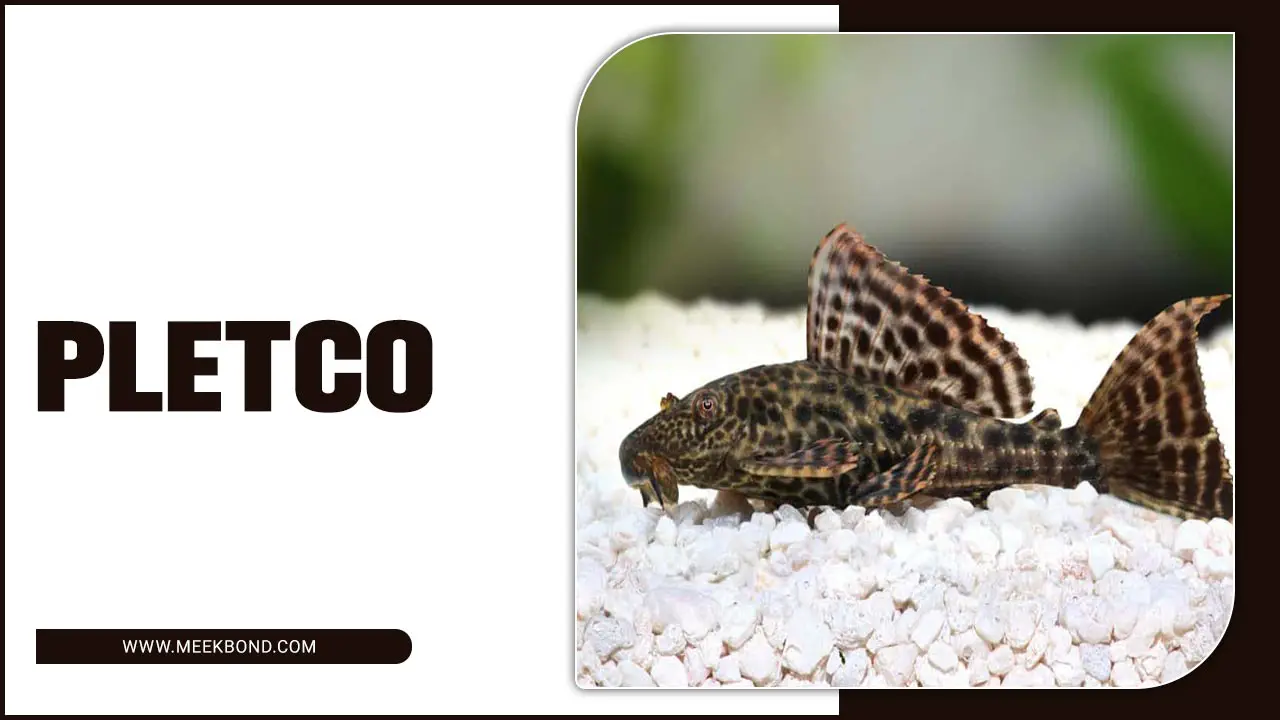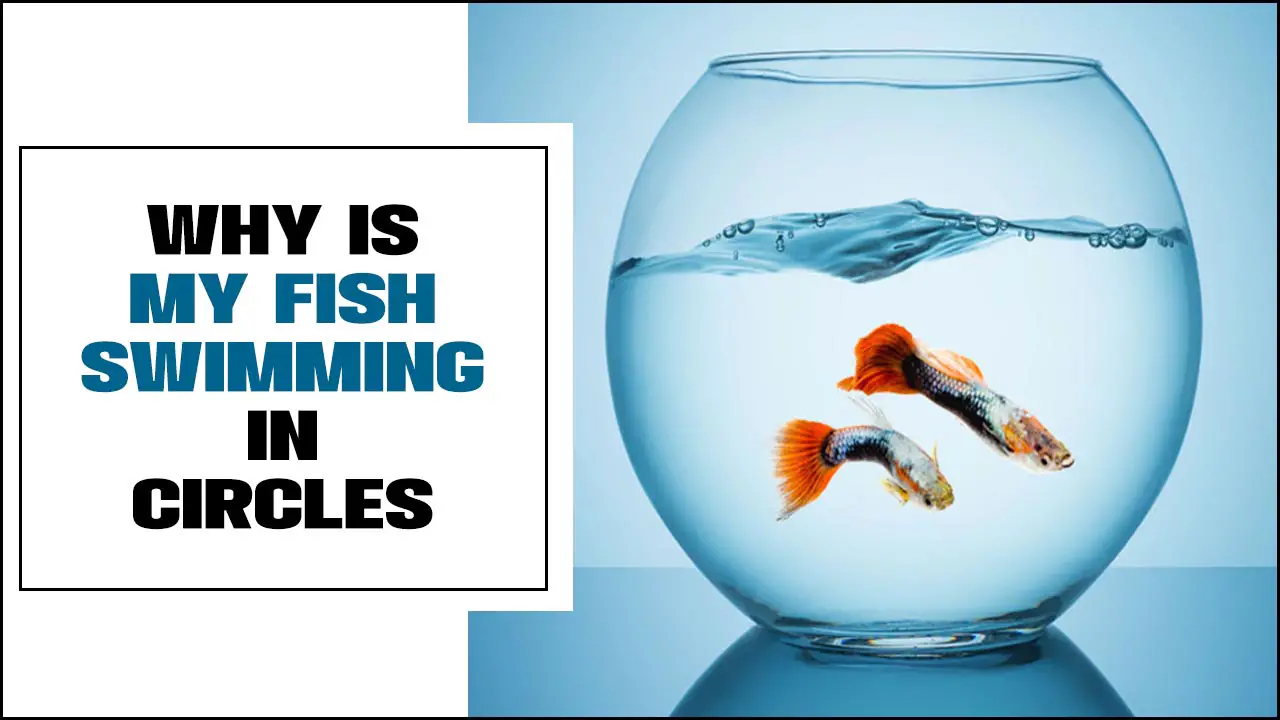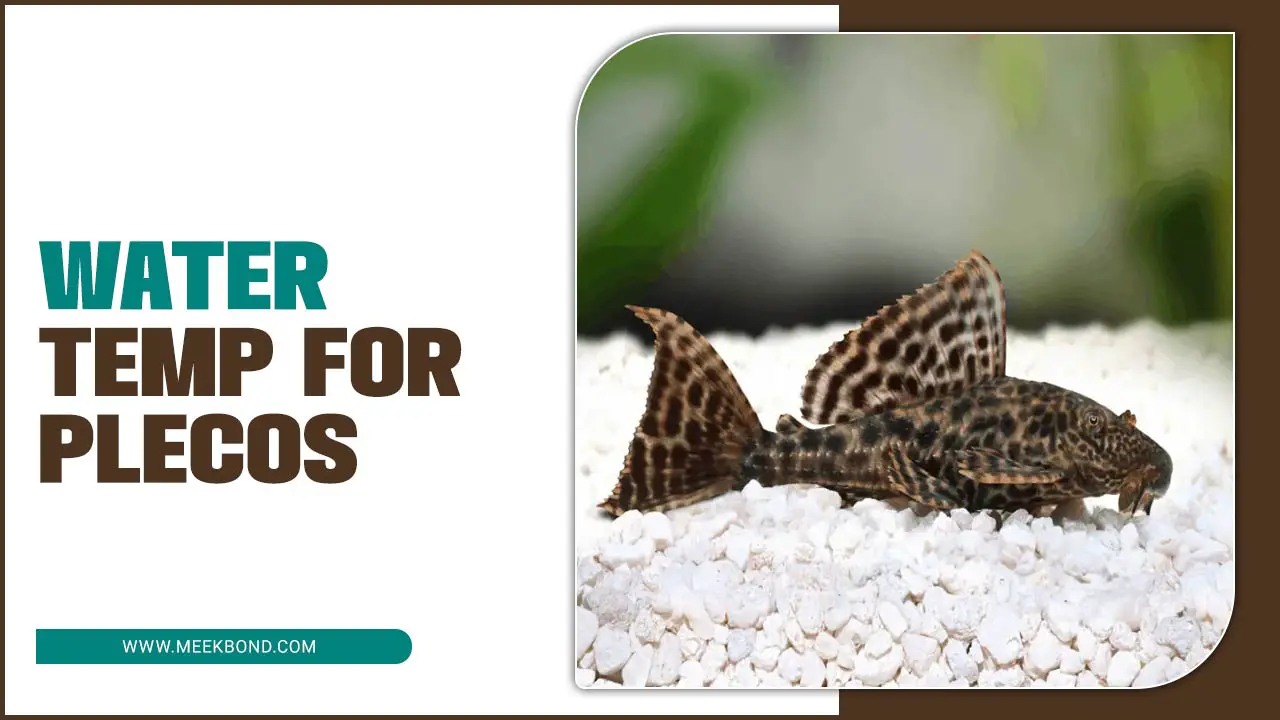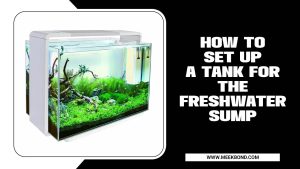Trout fishing is a popular leisure activity involving catching trout in freshwater bodies using flying or baitcasting techniques.
Different types of trout are found in varying locations with different regulations. Successful trout fishing requires expertise, patience, and an understanding of their behavior and habitat. Fishing for trout in a stream can be one of the most rewarding experiences for anglers.
But it is not as simple as casting your line and waiting for a bite. You must know the right tackle, techniques, and strategies to succeed in stream trout fishing. We will you through everything you need to know about stream trout fishing- from choosing the right tackle to tips on how to fish for trout in a stream. We will also discuss the importance of staying stealthy while fishing for trout and the best time to fish in streams. By the end, you will have all the knowledge to catch a trophy-sized trout in a stream.
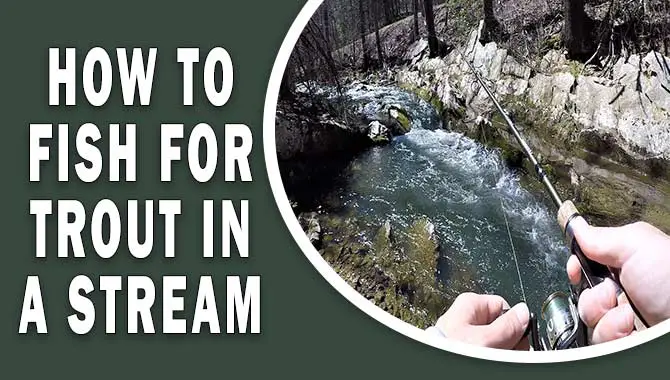
11 Simple Tips on How To Fish For Trout In A Stream
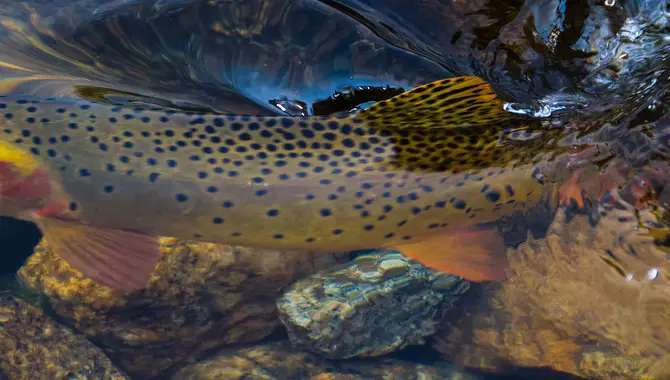
Fishing for Trout in a stream involves choosing the right equipment and learning how to read the water. When approaching fishing areas quietly, vary your techniques until you find what works best for you. To catch Trout effectively, look out for pocket water such as riffle, rock, or shoreline pockets, as they are great spots where Trout can hide. Fishing on banks is also an effective way to catch Trout, while bringing polarized sunglasses along could help spot fish more easily.
Additionally, practice precision by mastering roll casting techniques and avoiding clunky indicators that may spook fish. Finally, skip waders as they can hinder mobility when navigating through shallow waters. Instead, always fish upstream to increase your chances of catching Trout. Here are 11 simple tips on how to fish for trout in a stream.
1. Choosing The Right Tackle For Stream Trout Fishing
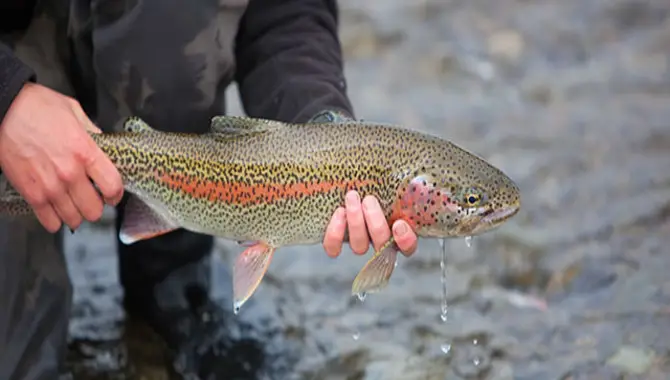
Choosing the right tackle for stream trout fishing can mean the difference between a successful catch and a frustrating day on the water. Regarding equipment, it’s important to balance weight and strength. Lighter rods and reels are ideal for smaller streams where the fish are more likely to be spooked by heavier equipment.
A 6-7 foot rod with a light or ultra-light power rating is recommended, paired with a spinning reel that has a smooth drag system. As for line, monofilament in the 2-6-pound test is suitable for most stream trout fishing situations. It’s also important to match your bait or lure to the conditions of the stream, so always bring a variety of options with you. With these tips in mind, you’ll be well-equipped to enjoy a successful day of stream trout fishing.
2. Look For Pocket Water
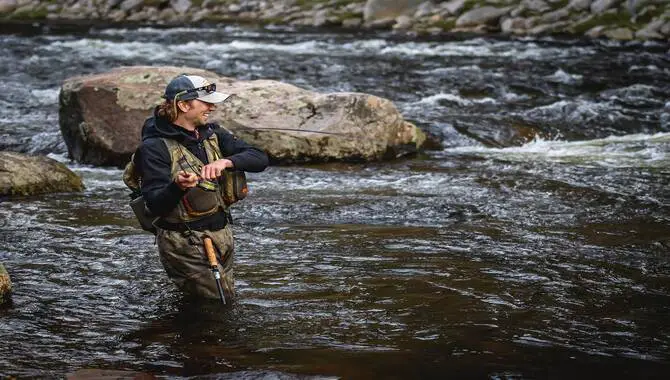
Look for pocket water to increase your chances of catching rainbow trout when fly-fishing in a stream. These small pockets of still water formed by flowing around rocks provide refuge for trout from the current while they patiently wait for food.
The best way to bait them is by using a dry fly or nymph that mimics their natural prey and casting it upstream of the pocket water. Pay attention to your line’s movement and exercise patience when waiting for a bite. Don’t forget that using a split shot can help you present your bait effectively in different depths of the water column.
3. Riffle Pockets
When fishing for trout in a stream, one cannot overlook the importance of finding and fishing riffle pockets. The water flows over shallow gravel beds, creating small riffles in these areas. Trout congregate in these pockets as they hunt for insects and other small prey.
To maximize your chances of success when fishing in riffle pockets, try casting upstream and allowing your bait or lure to drift naturally downstream. Light tackle and smaller baits or lures can also effectively target these areas. Remember to approach them quietly and avoid spooking any potential catches lurking beneath the surface.
4. Rock Pockets

Consider targeting rock pockets to maximize your chances of catching trout while fishing in a stream. These areas provide shelter and protection from the current, making them an ideal habitat for trout. To increase your chances of success, use a light line and be patient since these elusive species may take their time before biting. Remember that it’s essential to approach these areas carefully to avoid scaring away the fish.
Consider using artificial lures like spinners or jigs or natural baits like worms or crickets to attract trout species such as rainbow, brown, brook, or wild trout. Additionally, be sure to try different techniques, such as casting upstream and allowing your bait or lure to drift naturally downstream. Incorporating these tips into your strategy when fishing in a stream with rock pockets can increase your chances of success.
5. Shoreline Pockets
Shoreline pockets are ideal habitats for trout to rest and feed in small streams. Anglers should approach them quietly without spooking the fish. Casting upstream with a rig with a split shot and a weightless bait or lure helps the angler effectively cover every inch of water.
The use of wet flies like worms or spinners will mimic natural prey found in these pockets, which can attract rainbow trout effectively. During fly fishing, try using dry flies like crickets or mayflies that match hatches seen on the water’s surface. The best way to catch brown trout is by using jigs near undercut banks or boulders while keeping the rod tips high and tight lines. The Final Output is 96 words long.
6. Fish The Banks
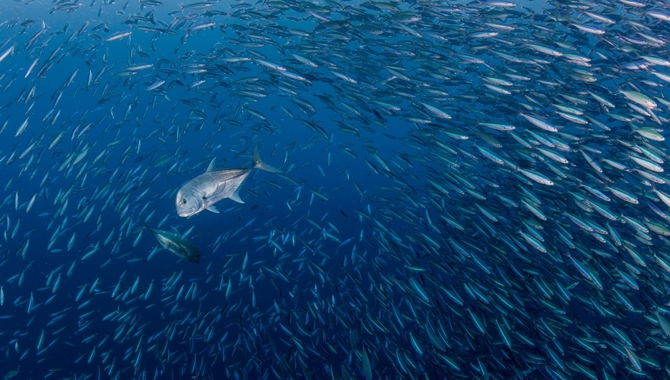
When fishing for trout in a stream, one effective technique is to fish the banks. This means casting your line parallel to the shore and retrieving it slowly, allowing your bait or lure to float downstream with the current. Trout often use the banks as cover and swim closer to them for food or protection from predators.
By targeting these areas, you increase your chances of catching a trout. It’s important to be mindful of your surroundings when fishing the banks, as you don’t want to disturb any potential hiding spots or spook the fish. With patience and practice, fishing the banks can become a valuable tool in your trout fishing arsenal.
7. Bring Your Polarized Sunglasses
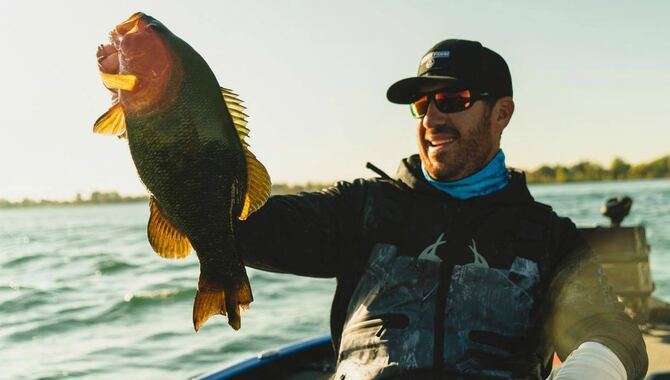
Investing in a good pair of polarized sunglasses is one of the best ways to increase your chances of success when fishing for trout in streams. These glasses reduce surface glare and help spot fish hiding in shadows or under rocks. Polarized sunglasses come with UV protection, which helps protect your eyes from harmful rays while you enjoy your time in nature.
They will enhance your experience as an angler and are also a valuable tool for spotting aquatic insects and hatches. Pack these glasses on your next trip to a trout stream or creek for a better chance of catching rainbow, brown, or brook trout.
8. Pack A Tenkara Rod
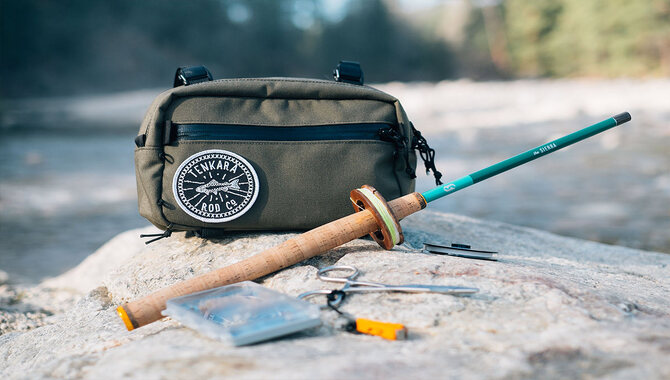
The best way to fish for trout in streams is by having the right tools, including a tenkara rod. This Japanese-originated rod helps with delicate presentations necessary for stream trout fishing. Additionally, it eliminates the need for a reel, thus reducing weight and simplifying your experience.
To increase your chances of catching more trout, make sure you bring along extra tippet material, as well as a variety of flies that match the hatch. Investing in a good pair of polarized sunglasses can also help you spot trout hiding in shadows or under rocks.
9. Practice Precision
When it comes to fishing for trout in a stream, precision is key. Trout are known for their skittish nature and can easily be spooked by sudden movements or loud noises. Practising precision in your casting and presentation is important to improve your chances of success.
Start by studying the water and identifying areas where trout will likely hide, such as behind rocks or in deeper pools. Then, focus on making accurate casts that land softly on the water’s surface. Avoid making any sudden movements that could startle the fish, and be patient as you wait for them to take the bait. With practice and patience, you can become a master at catching trout in streams.
10. Build Your Own Practice Arena
Improving your trout fishing skills requires practice, and building your own practice arena is an excellent way. Find a location with similar conditions as the stream you’ll be fishing in and set up targets or markers to simulate various casting scenarios like undercut banks and cross currents.
Experiment with different lures and baits, such as worms, minnows, and crickets, until you find the best. Regularly practicing in your own arena can significantly enhance your chances of landing larger trophy trout when on the stream.
11. Skip The Waders
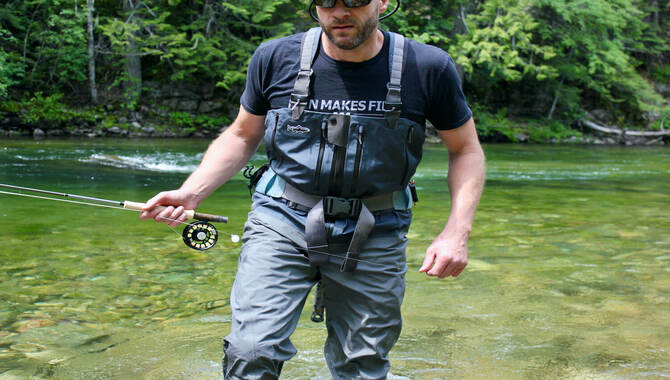
If you’re looking to fish for trout in a stream, one tip that can help is to skip the waders. While waders may seem like a good idea for staying dry and comfortable, they can be more of a hindrance than a help when fishing in a stream.
Wearing waders can make it more difficult to move around and get into the right position for casting, ultimately hurting your chances of catching trout. Instead, opt for waterproof shoes or boots that keep your feet dry while allowing you to move more freely. By skipping the waders and focusing on your technique, you’ll be well on your way to reeling in some beautiful trout from the stream.
Master The Roll Cast
To improve your trout fishing skills in streams, mastering the roll cast is essential to your arsenal. This casting technique allows you to cast your line even if there’s limited space behind you – just start with your rod tip low and lift it slowly while pulling back on the line. As the line straightens out, quickly flick your wrist to send it into the water.
The roll cast can be especially helpful when fishing smaller streams or tight spaces where traditional backcasting may not work. By practicing this technique in advance and improving your timing and accuracy, you’ll be well on your way to catching more trout in no time.
Avoid Clunky Indicators
To avoid scaring off the trout while fishing for them in streams, use smaller indicators or a dry fly instead of larger ones. It is also important to cast upstream and keep your line taut. While watching for any movement or changes in the indicator’s position.
Experiment with different indicators, such as spinners and jigs, and adjust your rig setup accordingly with split shots and knots. You can improve your chances of catching trout species like rainbow and brown trout and brookies in small streams.
Remember that the best way to catch these fish depends on water temperature and aquatic insect hatches. So be sure to try natural baits like crickets, maggots, and artificial lures. Like wet flies or nymphs, depending on what works best at any given time.
Don’t Overset The Hook
To catch more trout while fishing in streams, it’s essential not to overset the hook. Waiting for the fish to take the bait before setting the hook will prevent it from becoming dislodged from their mouth. Pay attention to subtle movements in your line and use a light touch when reeling them in.
Slow and steady retrieves can effectively entice bites from rainbow or brown trout. Experimenting with different types of bait, such as worms or lures, can also increase your chances of success while fishing in small streams or larger rivers.
Always Fish Upstream
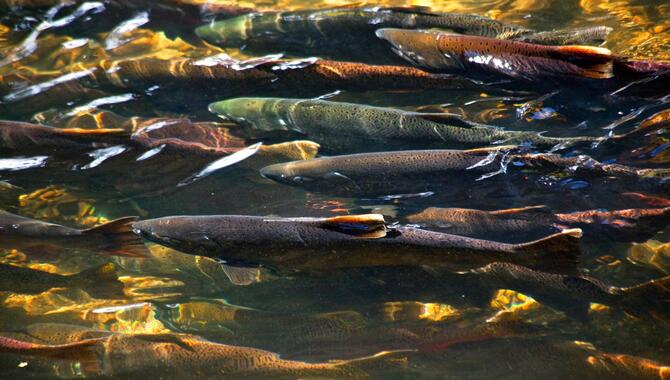
Knowing how to fish upstream effectively is crucial to catch more trout in a stream. This technique allows you to present your bait or lure more naturally to the fish by taking advantage of their tendency to face upstream. To increase your chances of success when fishing upstream for trout in streams.
Make sure to wade quietly without disturbing the fish. Light tackle and small hooks can mimic natural prey and entice even finicky trout to bite. Adjusting your tactics according to water temperature can also help you land more rainbow or brown trout on your line.
The Importance Of Staying Stealthy When Fishing For Trout In Streams
When fishing for trout in streams, it’s essential to remain discreet and avoid startling the fish. Wearing camouflage clothing helps you blend in naturally with your surroundings. You must approach the stream cautiously and quietly; use lighter gear like split shots or swivels to reduce noise levels. Casting shadows should be avoided at all costs. Use realistic bait such as crickets, maggots, or artificial lures like nymphs or wet flies, perfect for enticing rainbow trout or brook trout species.
By fishing upstream slowly and studying seams, riffles, boulders, and undercut banks where trout typically congregate; you can increase your opportunities for a successful catch. This is an excellent opportunity for fly-fishing enthusiasts who enjoy casting their line with finesse into tight spaces. The temperature of the water column can also affect your chances of success; particularly when using salmon eggs during hatches of mayflies.
The Best Time To Fish For Trout In A Stream

Trout fishing in streams can be a challenging but rewarding experience for anglers. One important factor that can greatly affect your success is the time of day you choose to fish. Generally, the best time to fish for trout in a stream is during the early morning or late afternoon/evening. When the water temperature is cooler, the fish are more active.
Trout tend to hide in deeper pools during the day’s heat. So it’s best to avoid fishing during midday when the sun is high and temperatures are at their peak. Additionally, keep an eye on weather patterns and water conditions, as they can also impact trout activity. With patience and persistence, you can increase your chances of catching a prized trout in a stream by choosing the right time to cast your line.
How To Cast Your Line For Stream Trout Fishing
Casting your line for stream trout fishing can be daunting, but with a few simple steps, you’ll reel in those fish quickly. First, ensure your line is properly rigged and securely attached to your bait or lure. Next, stand perpendicular to the stream and place your non-dominant foot forward.
Hold the rod with both hands and slowly bring it back over your shoulder, then quickly snap. It forward towards the water while releasing the line with your dominant hand.
The key is to keep the motion smooth and fluid to prevent tangles and ensure accurate placement of the bait or lure. Practice makes perfect, so don’t get discouraged if it takes a few tries to get it right. With persistence and patience, you’ll soon be casting like a pro and catching plenty of stream trout.
Conclusion
When it comes to fishing for trout in a stream, there are several things you need to keep in mind. You’ll want to choose the right equipment and bait and pick the best location and time of day to fish. Additionally, understanding the behavior of trout can help you increase your chances of catching one. Fishing for trout in a stream is an exhilarating experience. It takes patience, skill, and a bit of luck to land a catch.
But with the right tackle, tips, and techniques, you, too, can master the art of stream trout fishing. Remember to look for pocket water, fish the banks, bring your polarized sunglasses, and practice precision casting. Don’t forget to stay stealthy and choose the best time to fish for trout in a stream. We’ve discussed how to fish for trout in a stream. With these tips in mind, you’ll be well on your way to becoming a successful trout angler.
Frequently Asked Questions
Where Can I Find Big Trout In A River?
To find big trout in a river, look for areas with deep pools, undercut banks, and submerged logs. Pay attention to changes in current and temperature. Use larger bait or lures to attract bigger fish. Be patient and persistent as catching big trout requires skill and time.
Is Centerpin Fishing For Trout Good?
Centerpin fishing can work well for catching trout in streams, allowing a natural presentation of bait and lures. However, it requires some skills to master and may not be ideal for beginners. Give center pin fishing a shot if you’re up for a challenge and want to try something new.
Should You Use A Bobber When Trout Fishing?
Using a bobber when trout fishing can be useful in certain situations, as they help keep bait or lures at a specific depth. However, it’s not always necessary in still waters. It’s best to experiment with various techniques to determine the most effective method for your needs.
Do Scents Work For Trout?
Yes, scents can work for trout fishing. Adding scents to your bait or lures can attract curious fish and increase your chances of catching them. Experiment with different scents to find what works best for the particular stream you’re fishing in and the type of trout you’re targeting.
What Kind Of Flies Should I Use To Catch Trout In A Stream?
Matching the hatch for flies for trout fishing in a stream is important. Observe the insects on and around the water to determine what the fish are feeding on. Some commonly used flies for trout include dry flies, nymphs, and streamers. Experiment with different patterns to see what works best in your particular stream.

Aquarium passion is all about connecting with the aquatic life and providing education to the public on the importance of these creatures. We showcase a wide variety of marine life through our exhibits as well as working with schools to provide unique learning opportunities for students of all ages.


